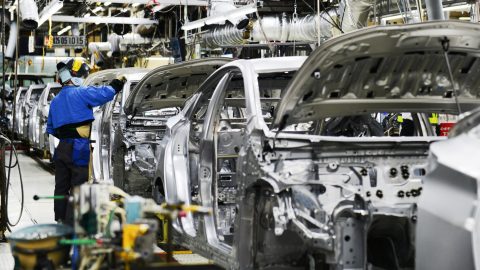
Illustration
A successful improvement can reduce product development time by nearly 50%, improve quality by 80% and exceed the set goal. This is what happened at Nissan, a world leader in car manufacturing.
From the company’s point of view: “The global automotive industry is currently participating in one of the biggest engineering races in history. That will change almost every aspect of the future car. hybrid and winner will be different from the rest.”
To ensure one of the winners, the company is building on the success of a program that was initiated in 2001, called V-3P (Product Value Added, Process Innovation, and programs). It is a comprehensive plan for companies in the automotive industry that face many challenges. In addition to helping the vehicle become environmentally friendly, other challenges include time pressure, the market and global supply chains.
The foundation of the V-3P program is the lifecycle management technology product from Siemens PLM Software for digital products.
Double goal
The initial V-3P program was formed with two goals: to bring new vehicles to market faster and improve product quality. Siemens software plays an important role in both fields. There are two aspects of software: process knowledge and product knowledge. Young engineers have access to data history and ideas. Since then the process is streamlined and time is shortened. The software allows for more efficient and creative work, and young engineers achieve the same results as experienced engineers.
In addition, the digital data generated in I-Deas and NX is the basis for virtual authentication, which is an important step for the company to shorten the product development cycle. Virtual authentication helps find problems early in the design process. If the problem is not discovered until the next step, it is time-consuming and costly to fix, plus it can cause changes to other parts of the product. A virtual test done early allows engineers to take countermeasures before other parts of the product are fixed.
Result
The V-3P program was very successful. When the program started, the company needed 20 months to get a car from the blueprint to production. Up to now, the V-3P program has helped four cars from desig121212121212112n to production take only 10.5 months.
Quality has also been significantly improved under the V-3P program. This has been determined in two ways. One is to reduce the number of design changes from 60% to 90%. Quality is measured in another way as the number of problems that arise after a vehicle has been marketed. By this measure, the V-3P program has excelled in reducing this number by 80%.
The company also reported that the V-3P program exceeded the return on investment that the company initially expected. As a result, the company has significantly reshaped its product line. The company has established a product development process that ensures quality and allows competing technologies to reach the market faster. The V-3P program, based on Siemens PLM technology, is the foundation for future success.